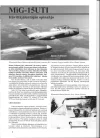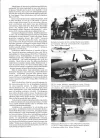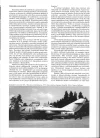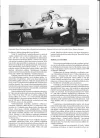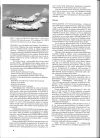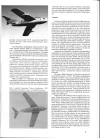Install the app
How to install the app on iOS
Follow along with the video below to see how to install our site as a web app on your home screen.
Note: This feature may not be available in some browsers.
You are using an out of date browser. It may not display this or other websites correctly.
You should upgrade or use an alternative browser.
You should upgrade or use an alternative browser.
Ilmasota
- Viestiketjun aloittaja Ikarus
- Aloitus PVM
Leaderdog
Kaukopartio
Ehkä kuuluisi jo yleisilmailuun mutta toimii myös täällä;
https://ais.fi/ais/eaip/pdf/gen/EF_GEN_2_2_EN.pdf
https://ais.fi/ais/eaip/pdf/gen/EF_GEN_2_2_EN.pdf
John Hilly
Respected Leader
Mielenkiintoinen juttu Iranin - Irakin sodasta. Oma ilmatorjunta aiheutti Iranille enemmän tappioita kuin vihollinen vuonna 1980.

https://warisboring.com/in-1980-fri...ranian-fighter-pilots-5dc8fd71d221#.v1metca2b

In 1980, Friendly Fire Was One of the Biggest Killers of Iranian Fighter Pilots
Jumpy ground gunners shot up anything that flew overhead
by KASH RYAN
September 2016 marked the 36th anniversary of the start of the Iran-Iraq War, which killed hundreds of thousands of people between 1980 and 1988.
Most people don’t know that this brutal conflict also saw a great number of friendly-fire incidents on the Iranian side — especially during the first few months of hostilities.
Fratricide was the biggest killer of Iranian air force pilots in the early stages of the air war that began on Sept. 20, 1980 when Iraqi air force fighter-bombers struck a dozen Iranian military bases by surprise.
The next day, the Iranians launched the largest strike package in its history, dubbed “Kaman-99.” The force of some 140 warplanes hit Iraqi air bases and army garrisons with no losses to enemy fire. But on their return leg, many fell victim to friendly fire due to a lack of coordination, shoddy command-and-control and a deep panic that had gripped Iranian forces on the ground.
The friendly-fire incident took its worst toll on Iranian F-4D/E and F-5E fighters and their pilots flying close-air-support missions over the crowded front line. On Sept. 21, 1980, Iranian forces shot down at least four friendly F-5Es.
Most of the time, Iranian pilots were unable to reach safer high altitudes due to Iraqi threats — and had to return to base while zooming just 100 or 200 feet above the ground. That exposed them to jumpy Iranian gunners who would destroy a plane … and then keep shooting at the pilot as he ejected.

Records indicate the Iranian air force lost 67 of its combat pilots in course of around 1,000 close-air-support sorties between Sept. 22 and Oct. 23 of the first year of the war.
Of these, 39 were F-4D/E crews and 28 were F-5E pilots. Thirty went down over highly-contested territory in southwestern Iran — many after being struck by Iranian fire.
The irony is that Iranian air force’s fighter-bomber pilots were actually safer during their sorties deep inside Iraqi air space. An estimated 44 Iranian pilots were killed or captured while performing “special mission” strikes inside Iraq in the same period.
The main contributor to blue-on-blue incidents was the lack of effective command and control. Add to this deadly mix the panic that had afflicted Islamic revolutionary guardsmen who, having received very little training, would shoot at anything that flew over their heads. Friend or foe.
The lack of coordination among different units responsible for management of Iranian air space eventually claimed the deputy commander of the Iranian air force Col. Abbas Babaei. He was shot down and killed by a guard-corps anti-aircraft-artillery unit while flying a routine forward-air-control sortie in the back seat of an F-5F in August 1987.
In many occasions, Iranian fighter aircraft were vectored to intercept friendly aircraft. “More often than not, delayed communications between our military transport aircraft involved in medevac sorties and ground control radar stations meant that our airborne or [quick-reaction-alert] fighters had to be vectored to intercept these ‘unknown’ bogeys,” Iranian F-14 pilot and double ace Col. “Ferry” Mazandarani recounts.

“In one of these incidents in late October 1980, an unknown bogey showed up on my F-14’s radar as I was flying a [combat air patrol] sortie west of Dezful air base in the southwest of Iran. The unknown aircraft was 120 miles to the west of my position and the [radio identification] system was unable to tell me whether this bird was friendly or foe.
“Therefore I relayed its speed, heading and altitude to two different [ground-control-intercept] radars to re-verify its status. Both GCI controllers declared it as a hostile/bandit aircraft and ordered us to engage it. My [radar-intercept officer] 1st. Lt. Y. Ahmadi and I prepared the systems for a [beyond-visual-range] engagement while planning for a possible re-attacks in case the missile missed.
“Around 70 miles to the target, I realized this bandit has been keeping a steady speed and 500 feet of altitude all along. This fact alone made me contact the GCI stations once again to get further confirmation. The response was the same. ‘It is a bandit. You are authorized to kill.’ While I could have launched an AIM-54 Phoenix at the low flying bandit, its speed and altitude caused me to hesitate. I wanted to get a [visual] I.D. on it, as well.
Buy ‘Air Combat Memoirs of the Iranian Air Force Pilots: Iranian Air Force Pilots in Combat 1980-88’
“My RIO protested. I reasoned that this is not a moment we should be wasting an expensive Phoenix on an already dead bird. I said, ‘Let’s gun him down.’
“About 12 to 15 miles out, I could see the bandit as it was flying close to the side of the mountains. I could not make the type of the aircraft but its camouflage paint was visible. A wide turn put me right behind it and we got to about eight miles when I suddenly yelled at my RIO over the intercom. ‘Do not touch anything. This is one of our F-4s.’
“I disengaged the weapons system and gently brought my aircraft to his port side and exchanged hand signals with the crew of this severely damaged fighter-bomber.”
Mazandarani’s foresight probably helped save the lives of pilots of a badly damaged F-4E whose IFF and radio were inoperable due to ground fire. They were lucky.
There is, however, only one case of air-to-air engagement between two Iranian aircraft during the war with Iraq. On March 16, 1985, an F-4E from Hamedan air base piloted by Capt. B. Akbari shot down another F-4E from the same air base over the front line.
Both the pilot and the back-seat weapons-system officer were able to eject, but gunners on the ground targeted and killed the pilot, Capt. Fath-Nejad, as he parachuted down. The WSO survived with minor injuries.
The saga of blue-on-blue incidents continues to challenge the Iranian air force. There have been ample rumors around as to what caused F-14A serial number 3-6062 to go down in flames over Bushehr’s nuclear facilities in 2012.
While one side vehemently blames pilot’s vertigo for the mishap, the other side passionately blames the Islamic Revolutionary Guards’ Tor-M1 air-defense missile battery for its fiery crash.
Kash Ryan is the author of Air Combat Memoirs of the Iranian Air Force Pilots.
https://warisboring.com/in-1980-fri...ranian-fighter-pilots-5dc8fd71d221#.v1metca2b
Leaderdog
Kaukopartio
Venäläiset jaksaa;
ILMATILAKOUKKUS
Jo toisen venäläishävittäjän epäillään loukanneen Suomen ilmatilaa torstain aikana, kertoo Suomen ilmavoimat.
Epäilty toinen ilmatilaloukkaus sattui puoli kymmenen aikoihin torstai-iltana Suomenlahdella Porvoon eteläpuolella.
Ilmavoimien mukaan venäläisen hävittäjän epäillään jälleen loukanneen Suomen ilmatilaa. Ensimmäinen epäilty ilmatilaloukkaus tapahtui hieman ennen viittä torstaina iltapäivällä.
Ensimmäisen epäillyn ilmatilaloukkauksen teki ilmavoimien mukaan venäläinen SU-27 hävittäjä. Myöhemmin illalla sattunut toinen epäilty ilmatilaloukkaus tehtiin samalla konetyypillä. Ilmavoimat kertoo tunnistaannsa ja kuvanneensa molemmat koneet.
Iltasanomat.
ILMATILAKOUKKUS
Jo toisen venäläishävittäjän epäillään loukanneen Suomen ilmatilaa torstain aikana, kertoo Suomen ilmavoimat.
Epäilty toinen ilmatilaloukkaus sattui puoli kymmenen aikoihin torstai-iltana Suomenlahdella Porvoon eteläpuolella.
Ilmavoimien mukaan venäläisen hävittäjän epäillään jälleen loukanneen Suomen ilmatilaa. Ensimmäinen epäilty ilmatilaloukkaus tapahtui hieman ennen viittä torstaina iltapäivällä.
Ensimmäisen epäillyn ilmatilaloukkauksen teki ilmavoimien mukaan venäläinen SU-27 hävittäjä. Myöhemmin illalla sattunut toinen epäilty ilmatilaloukkaus tehtiin samalla konetyypillä. Ilmavoimat kertoo tunnistaannsa ja kuvanneensa molemmat koneet.
Iltasanomat.
tulikomento
Supreme Leader
Mielenkiintoinen juttu Iranin - Irakin sodasta. Oma ilmatorjunta aiheutti Iranille enemmän tappioita kuin vihollinen vuonna 1980.

https://warisboring.com/in-1980-fri...ranian-fighter-pilots-5dc8fd71d221#.v1metca2b
Tämä onkin erittäin mielenkiintoinen aihe. Ja käsittääkseni huonosti tunnettu. Kalustollisesti myös kiintoisa konflikti. Iranilla oli käytössä shaahin Yhdysvalloista ostamia F-4 Phantomeja ja F-14 Tomcateja. Irak puolestaan luotti pääosin neuvostokalustoon. Sodan alkuvaiheessa Iran oli aluksi altavastaajana, mutta tilanne alkoi kohentua, kun islamistihallinto otti takaisin palvelukseen shaahin aikaista hyvin koulutettua upseeristoa. Näiden lojaliteetti oli 1979 vallankumouksen jälkeen asetettu kyseenalaiseksi ja osa päätyi vankilaan. Lisämaustetta ilmasotaan toi mm. USA:n Iranille lätkäisemät pakotteet. Varaosien saaminen amerikkalaisvalmisteisiin koneisiin muuttui todella haastavaksi.
Kirjallisuuttakin on olemassa vähänlaisesti. Nämä pari opusta löytyvät kirjahyllystä.
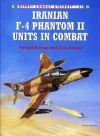
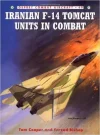
Tämä tekisi mieli hankkia, mutta hinta on todella suolainen.

tulikomento
Supreme Leader
Kysymys:
Muistaako tai tietääkö kukaan missä 90-luvun puolivälin (?) Siivet-lehden numerossa oli fiktiiviseen muotoon laadittu kirjoitus kriisiajan suomalaisesta maantietukikohdasta ? Jutussa siis kuvattiin kuinka Drakenit lähetettiin torjumaan vihollisen (= Venäjä) rynnäkkökonemuodostelmia.
Muistaako tai tietääkö kukaan missä 90-luvun puolivälin (?) Siivet-lehden numerossa oli fiktiiviseen muotoon laadittu kirjoitus kriisiajan suomalaisesta maantietukikohdasta ? Jutussa siis kuvattiin kuinka Drakenit lähetettiin torjumaan vihollisen (= Venäjä) rynnäkkökonemuodostelmia.
JR49
Respected Leader
Muistan lukeneeni ao. artikkelin. Todella mielenkiintoinen ja antoi kuvaa myös taistelunjohtojärjestelmästä. En omista sitä numeroa, mutta luin sen joskus -96 tai -97.Kysymys:
Muistaako tai tietääkö kukaan missä 90-luvun puolivälin (?) Siivet-lehden numerossa oli fiktiiviseen muotoon laadittu kirjoitus kriisiajan suomalaisesta maantietukikohdasta ? Jutussa siis kuvattiin kuinka Drakenit lähetettiin torjumaan vihollisen (= Venäjä) rynnäkkökonemuodostelmia.
JR49
Respected Leader
Suomen kaikkien aikojen suurimpiin ilmaoperaatioharjoituksiin kuuluva Ruska 2016 on alkamassa
Harjoituksella pyritään valmentamaan Suomen ilmapuolustuksen eri tehtävissä toimivia joukkoja.
9.10.2016
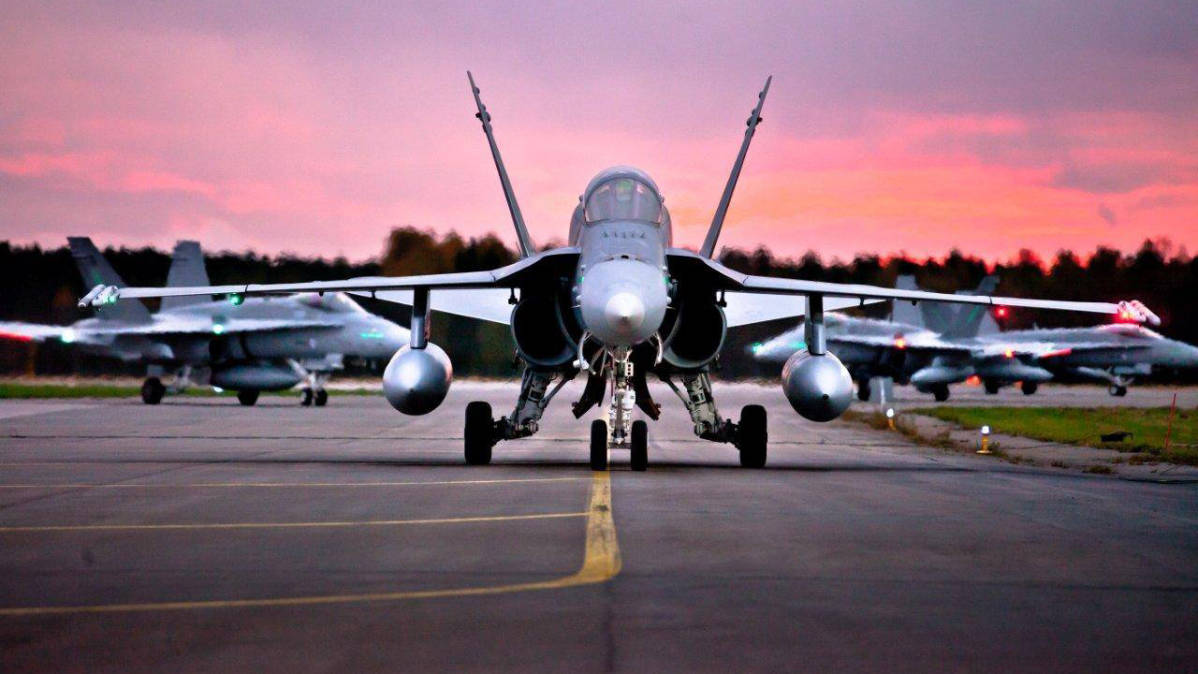
Ruskaan osallistuu mm. 30 Hornet-monitoimihävittäjää.Ilmavoimat
Mistä on kyse?
– Kyseessä on kansallisen puolustuksen harjoitus, korostaa everstiluutnantti Henrik Elo ilmavoimien esikunnasta.
Sotaharjoitukset kuuluvat ilmavoimien normaaliin harjoituskalenteriin, niiden mittaluokka vain vaihtelee.
– Ruskan tavoitteena on harjoittaa eri tehtävissä toimivia yksiköitä osana kokonaisuutta lähtien ilmatilan yhteisestä suojaussuunnitelmasta edeten joukkojen täytäntöönpanoon, Elo kertoo.
Operaatioon sisältyy sekä valtakunnallinen että tukikohtien sisäinen taso. Ruskassa harjoitetaan mm. johtamista, valvontaa, tiedustelua, logistiikkaa, lentoteknistä huoltoa ja tukikohtien suojaamisjärjestelyjä. Viimeaikaisilla ilmatilaloukkauksilla ei Henrik Elon mukaan ole minkäänlaista yhteyttä nyt järjestettävään massiiviseen harjoitukseen.
– Ilmatilaloukkauksiin reagointi kuuluu ilmavoimien päivittäiseen lentokoulutukseen, joten sillä ei ole mitään vaikutusta ilmaoperaatioharjoitukseemme.
Ruskaan osallistuu ilmavoimien 30 Hornet-monitoimihävittäjää, 15 Hawk-suihkuharjoituskonetta ja kuljetus- ja yhteyskonekalustoa sekä maavoimien NH90-helikoptereita. Ruotsin ilmavoimista on mukana kuusi Gripen-monitoimihävittäjää sekä kuljetus- ja taistelunjohtokonekalustoa.
Tämän vuoden alusta lähtien valmistellun harjoituksen lennot suuntautuvat alueelle, joka rajautuu Jyväskylään, Kuopioon, Kajaaniin, Kuusamoon, Rovaniemeen, Vaasaan ja Seinäjokeen. Lentoja on jonkin verran myös Pohjanlahden ilmatilassa ja Rovaniemen länsipuolella sijaitsevilla Suomen ja Ruotsin Cross Border -harjoitusalueilla. Lennot keskittyvät klo 8-22 välille.
– Meillä on tapana tiedottaa rutiininomaisesti pienemmistäkin toimistamme. Ruskasta on informoitu niin tehokkaasti, ettei operaation pitäisi aiheuttaa alueella asuville ihmisille yllätyksiä, vaikka liikkeellä onkin tavallista enemmän lentokoneita. Pimeällä voi nähdä ilma-alusten suojajärjestelmiin kuuluvia soihtuja, ja yliäänilentojen pamaukset voivat tuulesta riippuen kantautua mereltä mantereelle. Mutta muuten arkea voi elää normaalisti, Ruskasta huolimatta, everstiluutantti Henrik Elo vakuuttaa.
http://yle.fi/uutiset/3-9219194
Harjoituksella pyritään valmentamaan Suomen ilmapuolustuksen eri tehtävissä toimivia joukkoja.
9.10.2016

Ruskaan osallistuu mm. 30 Hornet-monitoimihävittäjää.Ilmavoimat
Mistä on kyse?
- Massiivinen ilmaoperaatioharjoitus Ruska 2016 järjestetään 10.-14.10.
- Mukana 2600 henkilöä, yli 50 ilma-alusta ja apuvoimia Ruotsista.
- Arkea voi harjoitusalueella elää normaalisti, vilkkaasta lentoliikenteestä huolimatta.
– Kyseessä on kansallisen puolustuksen harjoitus, korostaa everstiluutnantti Henrik Elo ilmavoimien esikunnasta.
Sotaharjoitukset kuuluvat ilmavoimien normaaliin harjoituskalenteriin, niiden mittaluokka vain vaihtelee.
– Ruskan tavoitteena on harjoittaa eri tehtävissä toimivia yksiköitä osana kokonaisuutta lähtien ilmatilan yhteisestä suojaussuunnitelmasta edeten joukkojen täytäntöönpanoon, Elo kertoo.
Operaatioon sisältyy sekä valtakunnallinen että tukikohtien sisäinen taso. Ruskassa harjoitetaan mm. johtamista, valvontaa, tiedustelua, logistiikkaa, lentoteknistä huoltoa ja tukikohtien suojaamisjärjestelyjä. Viimeaikaisilla ilmatilaloukkauksilla ei Henrik Elon mukaan ole minkäänlaista yhteyttä nyt järjestettävään massiiviseen harjoitukseen.
– Ilmatilaloukkauksiin reagointi kuuluu ilmavoimien päivittäiseen lentokoulutukseen, joten sillä ei ole mitään vaikutusta ilmaoperaatioharjoitukseemme.
Ruskaan osallistuu ilmavoimien 30 Hornet-monitoimihävittäjää, 15 Hawk-suihkuharjoituskonetta ja kuljetus- ja yhteyskonekalustoa sekä maavoimien NH90-helikoptereita. Ruotsin ilmavoimista on mukana kuusi Gripen-monitoimihävittäjää sekä kuljetus- ja taistelunjohtokonekalustoa.
Tämän vuoden alusta lähtien valmistellun harjoituksen lennot suuntautuvat alueelle, joka rajautuu Jyväskylään, Kuopioon, Kajaaniin, Kuusamoon, Rovaniemeen, Vaasaan ja Seinäjokeen. Lentoja on jonkin verran myös Pohjanlahden ilmatilassa ja Rovaniemen länsipuolella sijaitsevilla Suomen ja Ruotsin Cross Border -harjoitusalueilla. Lennot keskittyvät klo 8-22 välille.
– Meillä on tapana tiedottaa rutiininomaisesti pienemmistäkin toimistamme. Ruskasta on informoitu niin tehokkaasti, ettei operaation pitäisi aiheuttaa alueella asuville ihmisille yllätyksiä, vaikka liikkeellä onkin tavallista enemmän lentokoneita. Pimeällä voi nähdä ilma-alusten suojajärjestelmiin kuuluvia soihtuja, ja yliäänilentojen pamaukset voivat tuulesta riippuen kantautua mereltä mantereelle. Mutta muuten arkea voi elää normaalisti, Ruskasta huolimatta, everstiluutantti Henrik Elo vakuuttaa.
http://yle.fi/uutiset/3-9219194
tulikomento
Supreme Leader
Muistan lukeneeni ao. artikkelin. Todella mielenkiintoinen ja antoi kuvaa myös taistelunjohtojärjestelmästä. En omista sitä numeroa, mutta luin sen joskus -96 tai -97.
Joo, nyt puhutaan samasta asiasta. Siinä kuvattiin fiktiivisesti mitenkä tilanteen kiristyessä hävittäjät hajautetaan maantietukikohtiin. Sitten taistelunjohdossa odoteltiin mitenkä vihollinen ilmasotatoimet Suomea vastaan aloittaa. Jutussa oli muistini mukaan tosi hyvin kerrottu se Drakenien torjuntalentokin. Hemmetti kun menin parisen vuotta takaperin hukkaamaan tuon Siivet-lehden numeron. Ajattelin vaan että jos joku tuon muistaisi, niin voisin yrittää divareista vielä etsiskellä.
JR49
Respected Leader
Näin on. Sen kun joku skannaisi tänne, niin saisi minulta respektiä.Joo, nyt puhutaan samasta asiasta. Siinä kuvattiin fiktiivisesti mitenkä tilanteen kiristyessä hävittäjät hajautetaan maantietukikohtiin. Sitten taistelunjohdossa odoteltiin mitenkä vihollinen ilmasotatoimet Suomea vastaan aloittaa. Jutussa oli muistini mukaan tosi hyvin kerrottu se Drakenien torjuntalentokin. Hemmetti kun menin parisen vuotta takaperin hukkaamaan tuon Siivet-lehden numeron. Ajattelin vaan että jos joku tuon muistaisi, niin voisin yrittää divareista vielä etsiskellä.
Jos joku nyt sillä mitään tekee

tulikomento
Supreme Leader
Laivaston F-4 Phantom -kuski tarinoi ensimmäisestä ja viimeisistä sotalennoistaan Vietnamissa.
Ensimmäisellä keikalla suojattiin RA-5 Vigilante -tiedustelukonetta. Yhdellä viimeisistä lennoista ampui alas MiG-21:n.
Tämä mies siis kyseessä: http://www.epnaao.com/BIOS_files/REGULARS/Dose- Curtis R.pdf
Ensimmäisellä keikalla suojattiin RA-5 Vigilante -tiedustelukonetta. Yhdellä viimeisistä lennoista ampui alas MiG-21:n.
Tämä mies siis kyseessä: http://www.epnaao.com/BIOS_files/REGULARS/Dose- Curtis R.pdf
Viimeksi muokattu:
JR49
Respected Leader
Puolustusvoimat hankkii alkeis- ja peruslentokoulutuskoneita
Puolustusministeriö 10.10.2016 10.00
Puolustusministeri Niinistö on valtuuttanut Puolustusvoimat hankkimaan alkeis- ja peruslentokoulutuskoneita britannialaiselta Babcock International PLC:ltä. Hankinta sisältää 28 käytettyä Grob G115E -harjoituskonetta ja niiden käyttöönottoon tarvittavan koulutuksen.
Koneita on suunniteltu modernisoitavan Suomessa hankinnan jälkeen. Modernisointi sisältää nykyisten suunnistusmenetelmien koulutuksen mahdollistavat näyttölaitteet ja radiot.
Hankinta liittyy Puolustusvoimien lentokoulutuksen kehittämisen kokonaisuuteen. Kalustohankinnan kokonaisarvo on noin 6,6 miljoonaa euroa, mikä ei sisällä kaluston suunniteltua modernisointia. Koneiden toimitukset ajoittuvat vuosille 2016 ja 2017.
Nykyisen Vinka-kaluston alkeis- ja peruslentokoulutuksen palvelut toimittaa Patria Aviation Oy. Neuvottelut lentokoulutuspalvelun ja ylläpidon järjestämisestä uudella kalustolla ovat vielä kesken.
Puolustusministeriö 10.10.2016 10.00
Puolustusministeri Niinistö on valtuuttanut Puolustusvoimat hankkimaan alkeis- ja peruslentokoulutuskoneita britannialaiselta Babcock International PLC:ltä. Hankinta sisältää 28 käytettyä Grob G115E -harjoituskonetta ja niiden käyttöönottoon tarvittavan koulutuksen.
Koneita on suunniteltu modernisoitavan Suomessa hankinnan jälkeen. Modernisointi sisältää nykyisten suunnistusmenetelmien koulutuksen mahdollistavat näyttölaitteet ja radiot.
Hankinta liittyy Puolustusvoimien lentokoulutuksen kehittämisen kokonaisuuteen. Kalustohankinnan kokonaisarvo on noin 6,6 miljoonaa euroa, mikä ei sisällä kaluston suunniteltua modernisointia. Koneiden toimitukset ajoittuvat vuosille 2016 ja 2017.
Nykyisen Vinka-kaluston alkeis- ja peruslentokoulutuksen palvelut toimittaa Patria Aviation Oy. Neuvottelut lentokoulutuspalvelun ja ylläpidon järjestämisestä uudella kalustolla ovat vielä kesken.
JR49
Respected Leader
Tämmönenkös se sitten on. Mitä sanoo veli @Ikarus ? Ihan soivan pelin oloinen minun rajoittuneen asiantuntemukseni nojalla.
https://en.wikipedia.org/wiki/Grob_G_115
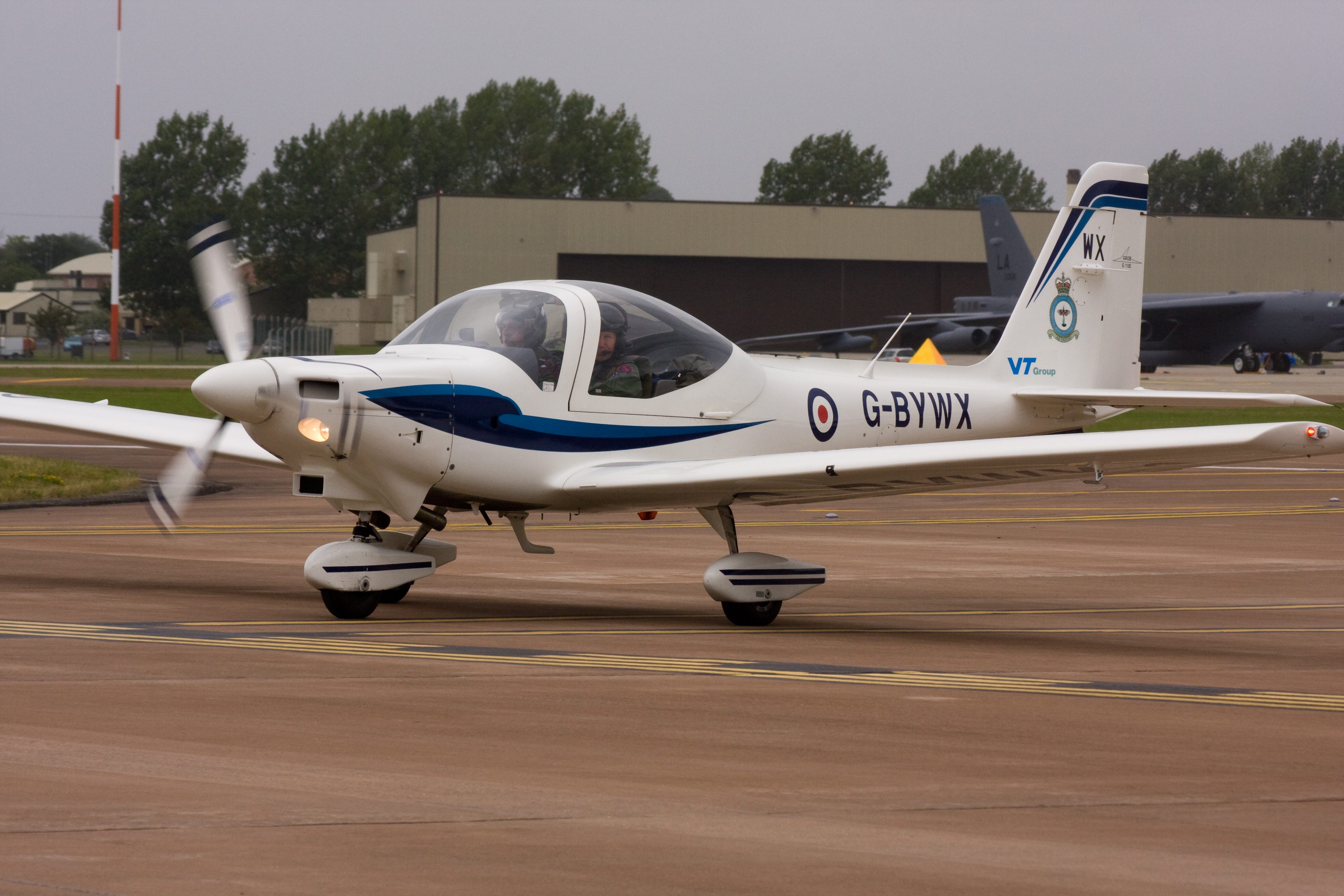
https://en.wikipedia.org/wiki/Grob_G_115

Ikarus
Respected Leader
Tämmönenkös se sitten on. Mitä sanoo veli @Ikarus ? Ihan soivan pelin oloinen minun rajoittuneen asiantuntemukseni nojalla.
https://en.wikipedia.org/wiki/Grob_G_115

Minäkään näistä trainereista paljon tiedä

On niillä jo lennetty, mutta komposiittirakenne kestää pitempään. Halpoja olivat, varmaankin hyvä kauppa. Suoritusarvoiltaan se ei juuri Vinkasta poikkea.
John Hilly
Respected Leader
Länsimaiset asiantuntijat skeptisiä venäjän S-400:n kykyyn ampua F-22 alas kaukaa.
https://warisboring.com/could-russi...th-fighter-over-syria-2ca2bb80791c#.ozbc8dwuv
Could Russia Shoot Down an F-22 Stealth Fighter Over Syria?
The Kremlin deploys advanced anti-aircraft missiles
by DAVE MAJUMDAR
As tensions between Washington and Moscow flare, the Russian military is warning the United States that it has the ability to target stealth aircraft such as the F-22 Raptor, F-35 Joint Strike Fighter and B-2 Spirit that might be operating over Syria with the Almaz-Antey S-400 and the recently arrived S-300V4 air and missile defense systems.
However, Western defense officials and analysts are skeptical and note that both the F-22 and the F-35 were specifically designed to counter those Russian-developed weapons.
“Russian S-300, S-400 air defense systems deployed in Syria’s Hmeymim and Tartus have combat ranges that may surprise any unidentified airborne targets,” Russian Defense Ministry spokesman Maj. Gen. Igor Konashenkov told the Russian state media outlet Sputnik.
“Operators of Russian air defense systems won’t have time to identify the origin of air strikes, and the response will be immediate. Any illusions about ‘invisible’ jets will inevitably be crushed by disappointing reality.”

While Moscow makes bold claims about the counter-stealth capabilities of its S-400 and S-300V4 missiles, the fact remains that even if Russian low-frequency search and acquisition radars can detect and track tactical fighter-sized stealth aircraft such as the F-22 or F-35, fire control radars operating in C, X and Ku bands cannot paint low observable jets except at very close ranges.
Stealth is not — and never has been — invisibility, but it does offer greatly delayed detection so that a fighter or bomber and can engage a target and leave before the enemy has time to react.

B-2 Spirit bombers at Andersen Air Force Base, Guam. U.S. Air Force photo
For sure, tactical fighter-sized stealth aircraft must be optimized to defeat higher-frequency bands such the C, X and Ku bands — that’s just a simple matter of physics. There is a “step change” in an L.O. aircraft’s signature once the frequency wavelength exceeds a certain threshold and causes a resonant effect.
Typically, that resonance occurs when a feature on an aircraft — such as a tail-fin or similar — is less than eight times the size of a particular frequency wavelength.
As a result, fighter-sized stealth aircraft that do not have the size or weight allowances for two feet or more of radar absorbent material coatings on every surface are forced to make trades as to which frequency bands they are optimized for.
In short, this means that radars operating at a lower frequency band, such as parts of the S or L band, are able to detect and track certain stealth aircraft.
Ultimately, to counter lower frequency radars, a larger flying-wing stealth aircraft design such as the Northrop Grumman B-2 Spirit or upcoming B-21 Raider — which lacks many of the features that cause a resonance effect — is a necessity.
But at the UHF and VHF band wavelengths, designers are not trying to make the aircraft invisible. Rather, engineers hope to create a radar cross-section that will blend in with the background noise inherent to low-frequency radars.
Low frequency radars can also “cue” fire control radars to a target. Additionally, some U.S. adversaries have started developing targeting radars that operate at lower frequencies. But those lower frequency fire-control radars exist only in theory — and are a long way off from being fielded.
“Stealth is ‘delayed detection’ and that delay is getting shorter. [Surface-to-air missile] radars are shifting their frequencies into lower frequency bands where U.S. stealth is less effective,” Mark Gammon, Boeing’s F/A-18E/F and EA-18G program manager for advanced capabilities, told me.
“Early warning radars are in the VHF spectrum where stealth has limited if any capability. These radars are networked into the SAM radars, giving the SAM radars cued search.”
However, low-frequency radars do not themselves provide a “weapons quality” track that is needed to guide a missile onto a target. There are various proposed techniques to use low frequency radars for such purposes, but none of those are likely to prove viable.
U.S. Air Force Col. Michael Pietrucha described one possible way to accomplish such a feat in an article I wrote for Aviation Week & Space Technology a few years ago. But Air Force officials were dismissive of the technique.
“Just because something is technically possible doesn’t make it tactically feasible,” one Air Force official with extensive stealth aircraft experience explained.
Meanwhile, operational Raptor pilots tell me “it would be really classified to discuss specific SAM counter tactics,” however, the F-22 is more than capable of defeating any of the current Russian surface-to-air missile systems that are currently or projected to be fielded.
Hopefully, we will not have to find out the how effective the Raptor truly is during a shooting war over Syria — since conflicts can rapidly escalate out of control, as history loves to teach us over and over again.
https://warisboring.com/could-russi...th-fighter-over-syria-2ca2bb80791c#.ozbc8dwuv
tulikomento
Supreme Leader
karponaattori
Alikersantti
Joo, nyt puhutaan samasta asiasta. Siinä kuvattiin fiktiivisesti mitenkä tilanteen kiristyessä hävittäjät hajautetaan maantietukikohtiin. Sitten taistelunjohdossa odoteltiin mitenkä vihollinen ilmasotatoimet Suomea vastaan aloittaa. Jutussa oli muistini mukaan tosi hyvin kerrottu se Drakenien torjuntalentokin. Hemmetti kun menin parisen vuotta takaperin hukkaamaan tuon Siivet-lehden numeron. Ajattelin vaan että jos joku tuon muistaisi, niin voisin yrittää divareista vielä etsiskellä.
Voisiko olla tämä?
https://www.google.fi/search?q=siiv...sch&q=siivet+lehti+1995&imgrc=bqFynBMBf1JxbM:
Otsikoissa "hävittäjätorjuntaa maantiellä"
Ikarus
Respected Leader
Ajattelin että tämä saattaisi kiinnostaa. Skannasin Suomen Ilmailuhistoriallisen Lehden numerossa 2/2012 olleen jutun MiG-15 UTI:lla lentämisestä.
Kiinnostavaa lukemista! Jos sinulla on lisää vastaavia, luetuksi tulee

''Mukelo'' oli siis haasteellinen rullatessa, mutta aivan hyvä lentää.
Myös MiG-21:ssä oli sauvassa jarrukahva, mutta olikohan tuo jarrutusmenetelmä samanlainen? ''Mukelon'' systeemillä siis annosteltiin jarrutusvoima sauvan jarrukahvasta, sivuperäsimen jalkapolkimia painettessa valittiin kumpiko pyörä jarruttaa vai molemmat.

